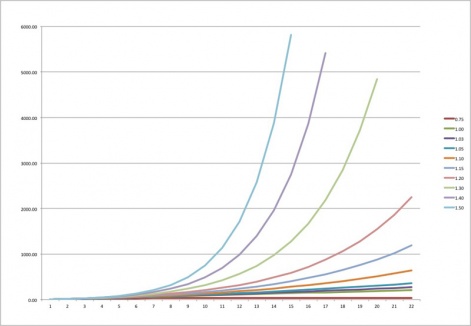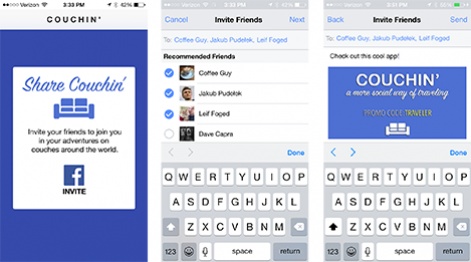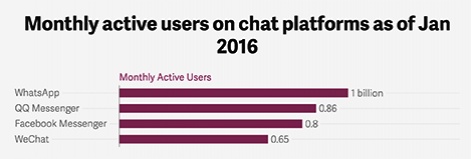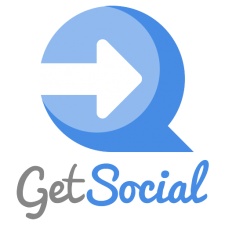You are polishing the final bits and bytes of your new game. Soon it will be available to the world.
Or maybe it is already available on the app markets!
You did your research and by now you already know that in order to increase your game's monetization you need to increase your user acquisition, since only 1% of your total number of players will spend money in your app.
But increasing user acquisition is easier said than done, right?
So how do you do it without going bankrupt?
User acquisition
Perhaps you have tried mobile advertising, but realised that cost per installs are more expensive than you hoped for.
Or maybe you have tried cold outreaches and have sent more emails that you can count. Or maybe even tried social media publishing but your posts get lost amongst all that clutter.
In the ideal world your app will become an overnight success via word-of-mouth alone.
Word-of-mouth is still the most effective form of marketing.
Dreams can come true since word-of-mouth is still the most effective form of marketing after all. It's free and in return you will get those quality users that you are looking for.
So what is the current best place to take advantage of that tried-and-true form of advertising?
- Where are your users now spending their time in their mobile phones?
- Where will they be able to receive game recommendations from friends, that can immediately be acted upon?
Welcome to the world of Instant Messaging (IM) apps.
With popular chat apps such as WeChat and WhatsApp on the rise more than ever, now it is time to take full advantage of those platforms.
Remember the last time you looked at your IM apps? Your users are doing the same!
Now for a fact: Did you know that 88% of users prefer to invite friends via popular chat apps over Facebook? App invites are crucial to make your app a success.
In simple terms, App Invites enable you as an app developer to grow your app's audience by letting your existing users invite their contact/friends.
Think of it as your app's sharing mechanism. If your users are rewarded when inviting their friends, your app will quickly reach a huge amount of new users.
So your target is to aim for a sharing coefficient bigger than 1.00, meaning that each user is inviting more than one friend into the app, tapping into your users' social graph as a source to drive referrals.
With that goal in mind, you'll be aiming for that needed exponential growth, making your game a hit!

Your app invites will also be enhanced with deeplinking mechanisms, allowing you to track invites sent, check how many invites are converting into installs, and reward the user that sent the installed invite.
On the other side, new users will be able to receive invites with custom experiences, such as discount offers.
Now let's compare two distinct invite platforms: Facebook versus Google app invites.
Google App Invites
Last year Google announced App Invites, which is currently in Beta. Google App Invites is available on both Android and iOS and here's what's in the beta toolkit:
- 1. Use app invites for expanded reach: Tap into SMS and email invites via your user's phone and Google contacts.
- 2. Make it easy for your users to send invites. App Invite system recommends their closest contacts to share your app with, and suggest a preferred method of delivery.
- 3. Send actionable invite cards: Include an install button right in an email invite.
- 4. Faster Android install flows: Your new Android users can click App Invite and download your app straight from the Play Store, bypassing the browser windows that usually open in between.
- 5. Create personalized onboarding flows: New users can get deep linked into a specific onboarding experience for example, you can offer custom discount codes or content.
- 6. Measure app invites using Google Analytics custom reports.
How is it different to Facebook App invites?
Facebook also revealed its own 'App Invites' system at F8 last year. It also lets users share personalized messages by adding things like user-generated photos or screenshots.
However, these invites are limited to Facebook's own social graph and can't be sent by SMS or email.

Which one should you implement?
Both, since they are complementary to each other. As Facebook app invites are limited to only Facebook and Google App invites enables invites via SMS and Email.
What about Twitter, WhatsApp, Kik, Kakao, Line and other well known networks?
User's social graph extends beyond Facebook, Email and SMS as messaging apps row in popularity.
Today WhatsApp garners over 1 billion monthly active users followed by Facebook Messenger at 800 million and WeChat at 650 million. So tapping into such networks is of paramount importance for mobile app developers.

GetSocial Smart Invites incorporating App Invites and beyond
GetSocial's Smart Invites are fully automated, customizable and easy to run in-app referral system to boost your app installs and engagement.
Smart Invites incorporate the benefits of App Invites (including deep linking, custom user onboarding, attribution tracking and more) and also encourage users to invite their friends via a large variety of popular invite providers like WhatsApp, Kik, Kakao, Line, Twitter etc besides Facebook, SMS and email.
And just like Facebook and Google's App Invites, GetSocial's Smart Invites are completely free.
You can find out more about GetSocial's services or arrange a meeting at Casual Connects Amsterdam via its website.





















